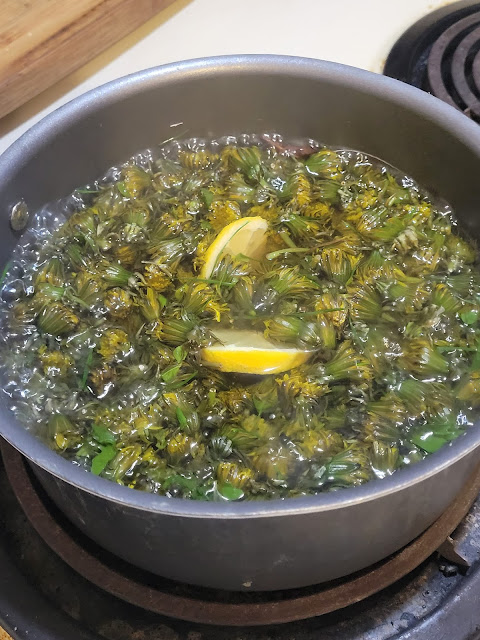The Irresistible Art of Homemade Bread: A Beginner's Guide to Baking Warm and Delicious Loaves
We all know the incredible aroma that fills the house when a fresh loaf of bread is baking in the oven.
There's something so satisfying about slicing into a warm, crusty loaf that you made with your own two hands. In this article, we will take you through the process of making homemade bread from scratch. No need for fancy equipment or complicated techniques – just simple, wholesome ingredients and a little bit of patience. So, let's roll up our sleeves and get baking!
1. Gather Your Ingredients
Before we dive into the recipe, let's make sure we have everything we need. Here are the basic ingredients for a classic homemade bread:
- - 4 cups of all-purpose flour
- - 2 teaspoons of active dry yeast
- - 2 teaspoons of salt
- - 2 tablespoons of sugar
- - 2 cups of warm water
- - 2 tablespoons of olive oil
2. Activate the Yeast
Yeast is a key ingredient in bread-making as it helps the dough rise and gives the bread its light and airy texture. To activate the yeast, follow these steps:
- 1. In a small bowl, combine the warm water, sugar, and yeast. Give it a gentle stir and let it sit for about 5 minutes until the mixture becomes frothy.
3. Mix the Dough
Now that our yeast is activated, it's time to mix the dough. Here's what you need to do:
- 1. In a large mixing bowl, combine the flour and salt. Make a well in the center of the flour mixture.
- 2. Pour the activated yeast mixture into the well, along with the olive oil.
- 3. Using a wooden spoon or your hands, mix the ingredients together until a shaggy dough forms.
4. Knead the Dough
Kneading is an essential step in bread-making as it helps develop the gluten, which gives the bread its structure. Follow these steps to knead the dough:
- 1. Lightly flour a clean surface and transfer the dough onto it.
- 2. Begin kneading the dough by pushing it away from you with the heel of your hand, then folding it back towards you. Repeat this motion for about 10 minutes until the dough becomes smooth and elastic.
5. Let the Dough Rise
After all the hard work of kneading, it's time to let the dough rest and rise. Here's what you need to do:
- 1. Grease a large bowl with olive oil and place the kneaded dough into it.
- 2. Cover the bowl with a clean kitchen towel or plastic wrap and let it rise in a warm, draft-free place for about 1 to 2 hours, or until the dough has doubled in size.
6. Shape and Second Rise
Once the dough has risen, it's time to shape it and give it a second rise. Follow these steps:
- 1. Punch down the risen dough to release any air bubbles.
- 2. Transfer the dough onto a lightly floured surface and shape it into your desired loaf shape – round, oval, or even a baguette.
- 3. Place the shaped dough onto a baking sheet lined with parchment paper.
- 4. Cover the dough with a clean kitchen towel and let it rise for another 30 to 60 minutes, or until it has doubled in size once again.
7. Preheat the Oven
- While the dough is undergoing its second rise, preheat your oven to 425°F (220°C). This will ensure that the oven is nice and hot when it's time to bake the bread.
8. Bake the Bread
Finally, it's time to bake our homemade bread to golden perfection. Follow these steps:
- 1. Once the dough has completed its second rise, remove the towel and place the baking sheet in the preheated oven.
- 2. Bake for 25 to 30 minutes, or until the bread is golden brown and sounds hollow when tapped on the bottom.
- 3. Remove the bread from the oven and let it cool on a wire rack before slicing.
And there you have it – a step-by-step guide to making homemade bread from scratch.
With just a few simple ingredients and a little bit of love, you can create a delicious loaf of bread that will impress your family and friends. So why not give it a try? The satisfaction of enjoying a slice of warm, freshly baked bread made by your own hands is truly incomparable.
FAQs
1. Can I use whole wheat flour instead of all-purpose flour?
- Absolutely! Whole wheat flour can be used as a healthier alternative to all-purpose flour. However, keep in mind that whole wheat flour absorbs more liquid, so you may need to adjust the amount of water accordingly.
2. Can I add other ingredients to the bread dough, like herbs or cheese?
- Definitely! Adding herbs, cheese, or even dried fruits and nutsto the bread dough can add an extra layer of flavor and texture. Feel free to experiment and get creative with your bread! Just be mindful of the measurements and how the additional ingredients may affect the rise and texture of the bread.
3. How should I store homemade bread to keep it fresh?
- To keep your homemade bread fresh and delicious for as long as possible, it's best to store it in a bread box or a paper bag at room temperature. Avoid storing it in the refrigerator, as this can make the bread go stale faster. If you have a whole loaf that you won't finish within a few days, you can also slice it and freeze individual slices, then thaw them as needed.




















Comments